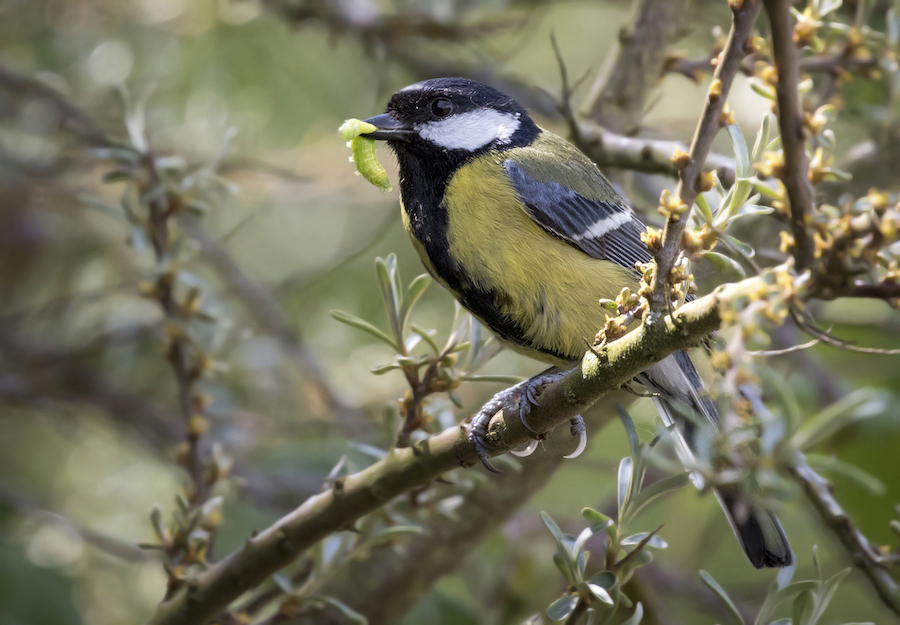Top tips for making your garden look gorgeous while helping wildlife too
With garden show season almost upon us, four experts who will be creating gardens and offering inspiration at various shows this year, offer top tips to get gardens looking their best – while making sure wildlife is well looked after too.
This is what they advise:
BBC Gardeners’ World presenter Adam Frost

Adam Frost
1. Make sure bird baths are clean and topped up with water for birds to drink and bathe in. If you have a pond or deeper water feature, make sure there’s a shallow area to make it easier for frogs and other wildlife to get in and out of.
2. Garden pests, like slugs and snails, will start appearing as the weather warms up. To encourage predators like hedgehogs and frogs into the garden, leave a more natural area in a quiet corner for shelter – incorporating a small pile of logs is a great place to hide food for any visitors too.
3. Hedges are really important habitats for birds and many will already be building nests. Resist cutting hedges until after nesting season (between February and August) to encourage more birds into your garden.
Gardening expert Martin Fish

Martin Fish
1. If raking your lawn to remove a build-up of moss, leave some of the dry moss in an area of the garden so that birds can collect it for nest building.
2. When having a final prune and tidy through borders, bundle some of the branches and hollow stems together and lay them under a shrub to create a mini-bug hotel – little beasties and bugs will love it.
3. Spring is an ideal time to fill gaps with new plants, so consider planting a selection of nectar rich plants such as penstemon or foxgloves, to encourage bees, butterflies and pollinating insects.
Designer and RHS Ambassador Jamie Butterworth

Jamie Butterworth
1. Installing a bird bath, or similar in the garden, encourages this natural form of pest control as birds will eat caterpillars and aphids, removing the need for harmful chemicals.
2. When planning a new garden, perennials take time to knit together so set aside about 10% of your plant list for wildlife friendly annuals to fill the bare patches with beautiful blooms and a banquet for wildlife.
3. Wildlife friendly planting can be anywhere, on a balcony, windowsill or in pots. Containers lend themselves just as well to pollinator-friendly plants such as Centaurea cyanus ‘Black Boy’, Daucus carota and Cerinthe major ‘Purpurascens’ and they’ll look spectacular too.
Garden designer Paul Hervey-Brookes

1. Pot on and feed containerised hostas and agapanthus for better foliage and flowers. Bees and insects will love them.
2. Take soft tip cuttings of dahlia tubers, aster and other suitable herbaceous perennials to bulk up the garden for free. Why not use the savings to buy a bird box or feeder to encourage more feathered friends into the garden?
3. Weed the majority of baby weed seedlings out now and reap the benefits of a summer free of weeding. But be sure to leave a few to go wild in an area where they will bother you least. Butterflies, bees and birds will thank you for it.
The four experts will be appearing at RHS Chatsworth Flower Show (June 5-9). Tickets can be bought at rhs.org.uk/shows.
The Press Association
Latest posts by The Press Association (see all)
- The best ways to boost your immune system as cold temperatures hit - January 5, 2025
- The Osmonds star and ‘beloved husband and father’ Wayne Osmond dies aged 73 - January 2, 2025
- What screenings are available on the NHS to detect cancer early? - January 2, 2025
- Help your grandchildren make the most of Big Schools’ Birdwatch - January 1, 2025
- Veteran radio star Johnnie Walker dies aged 79 - December 31, 2024




















